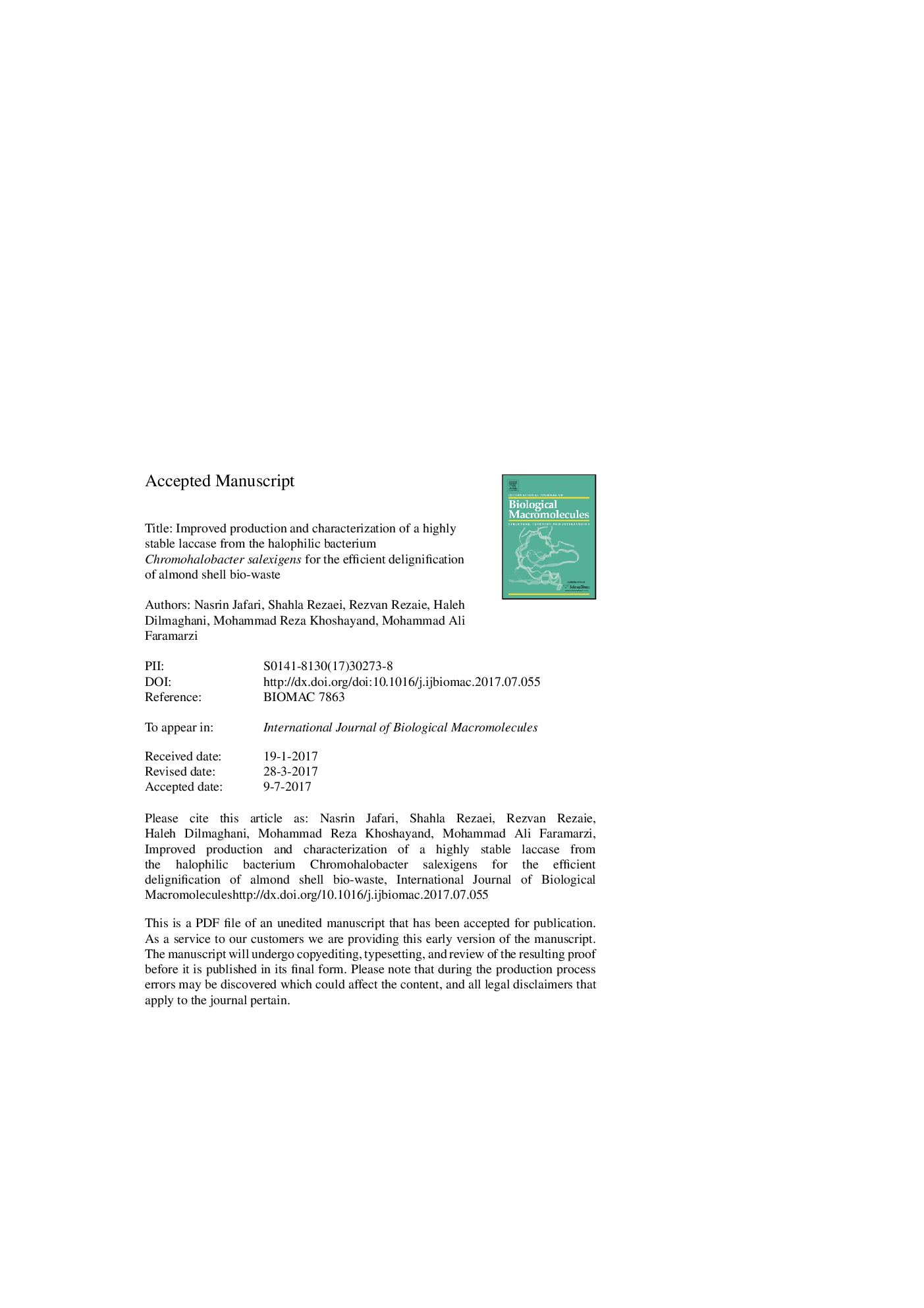| Article ID | Journal | Published Year | Pages | File Type |
|---|---|---|---|---|
| 8329497 | International Journal of Biological Macromolecules | 2017 | 15 Pages |
Abstract
Extremozymes have gained importance for their ability to efficiently develop the processes in rigorous industrial conditions with incidence in the recycling of especially robust natural wastes. The production of an extracellular laccase from the halophilic bacterium Chromohalobacter salexigens aided for the bio-delignification of almond shell was optimized using response surface methodology followed by one-factor-at-a-time, resulting in an 80-fold increase in the enzyme yield. Out of 10 different medium components, CuSO4, ZnSO4, glucose, and urea were shown to have the greatest effects on the laccase production. The crude laccase was surprisingly stable against the various solvents, salts, chemicals, pH ranges, and temperatures, and it exhibited a high catalytic efficiency to a wide range of phenolic and non-phenolic substrates. Laccase reduced the kappa number of the lignin of almond shell by approximately 27% without the aid of a mediator, and the delignification efficiency strengthened by up to 58% reduction in kappa number in the used harsh conditions. Due to the high potential of the enzyme in delignification, specifically under extreme conditions, laccase from C. salexigens can be considered as an ideal alternative for chemical treatment methods in cellulose fibres extraction of lignocellulosic bio-wastes or delignification of the lignin and lignin-derived industrial wastes.
Related Topics
Life Sciences
Biochemistry, Genetics and Molecular Biology
Biochemistry
Authors
Nasrin Jafari, Shahla Rezaei, Rezvan Rezaie, Haleh Dilmaghani, Mohammad Reza Khoshayand, Mohammad Ali Faramarzi,
